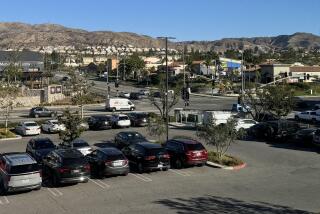High school sports teams are running into major obstacles in trying to work out

Electrostatic spray used to clean equipment as football team tries to get into shape during COVID-19.
- Share via
Carrying a backpack filled with liquid disinfectant and pointing an electrostatic sprayer at speed bags on the Sherman Oaks Notre Dame football field, coach Joe McNab looked as if he could be the stunt double for Bill Murray in the movie “Ghostbusters.” It’s a familiar look at schools trying to follow safety guidelines during the COVID-19 pandemic.
Strength and conditioning coach Nick Garcia had his own electrostatic sprayer in the weight room, spraying handles on weight bars after players engaged in workouts. The attempt at safety doesn’t come cheaply. The electrostatic sprayer McNab is using cost $1,749.99. The spray gun Garcia had, including a five-gallon pail of disinfectant, is listed at $1,595.00.
Notre Dame may or may not be able to continue conditioning workouts this week depending on advice from county officials.
Orange County schools received notification from the Department of Education on Monday advising to shut down conditioning drills based on guidance from the California Department of Public Health. San Bernardino County that schools are not permitted to hold conditioning workouts.
Santa Margarita, a private school from the Trinity League, announced Tuesday it was shutting down its camps “in an abundance of caution” in conjunction with the recommendations of the Orange County Department of Education. Servite, JSerra and Santa Ana Mater Dei followed in announcing they will follow the same guidance and halt camps until further notice.
Notre Dame resumed workouts Monday after shutting down for two weeks while reevaluating its safety protocols. One change was no longer holding meetings indoors. Instead, the team will use video conferencing for meetings. Players wore masks, had their temperatures checked and were limited to working out in groups of 10.
“I learned we need to be highly adaptive, sort of like water, where everything is fluid,” McNab said.
What’s clear is that schools are running into obstacles trying to keep hope alive about resuming high school sports this fall. They’ve started workouts, then stopped, then started again. That’s precisely the kind of situation the California Interscholastic Federation has said it wants to avoid. A decision on when the high school sports season might return is expected by July 20.
More to Read
Get our high school sports newsletter
Prep Rally is devoted to the SoCal high school sports experience, bringing you scores, stories and a behind-the-scenes look at what makes prep sports so popular.
You may occasionally receive promotional content from the Los Angeles Times.







